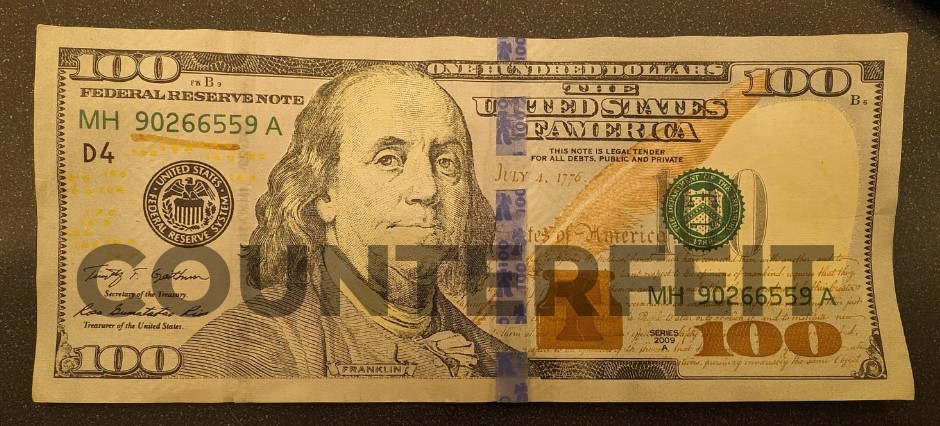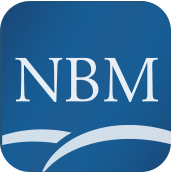We have recently seen counterfeit currency right here in Vermont brought to the bank. The $100 bill pictured below is an actual counterfeit $100 note we received this week (watermark added). This was one of two we received, both with the same serial number (MH 90266559 A).
It appears the counterfeiter “washed” a lower-denomination bill (like a $5 or $10) and printed the design of a $100. This means it may feel and look like a $100 bill, but there were still some things off about it.
- The blue security band on the front felt like it was glued on, and it didn’t have the holographic features of the real thing.
- The hologram face didn’t quite line up to the white circle, and it was not the same face as appears on the bill.
- The ink printed on the bill was not raised ink, so there was no texture to it when you ran your finger across it.
Note that sometimes the counterfeit detection markers don’t work on marked bills that have been printed on “washed” bills of lower denominations because they still have the original chemical paper.

To prevent yourself from accepting counterfeit money, make sure you:
- Feel the paper
- Move your finger across the note. It should feel slightly rough to the touch as a result of the printing process and the unique composition of the paper.
- Tilt the note
- Tilt the note to see the ink in the numbers on the lower right corner change color. On the current style of notes, the color should change from copper to green.
- Color-shifting ink appears on denominations of $10 and higher
- The current style $100 note includes two additional features you can check by tilting the note: a color-shifting bell in the inkwell and a 3-D security ribbon. The security ribbon contains images of bells and 100s that shift as you tilt the note.
- Tilt the note to see the ink in the numbers on the lower right corner change color. On the current style of notes, the color should change from copper to green.
- Check with light
- Hold the note to light to check that the watermark and security thread are visible from the front and back of the note.
- The security thread is in a different location on each denomination $5 and higher.
- The watermarks on the $10, $20, $50, and $100 notes should match the portrait on the front of the note. The $5 note has numeral 5 watermarks.
- Hold the note to light to check that the watermark and security thread are visible from the front and back of the note.
If someone presents you with counterfeit currency for payment, please contact the police. If you think you may have already accepted counterfeit currency, you can bring it to one of our locations to review.
The information on how to detect counterfeit currency is provided by the U.S. Currency Education Program.




